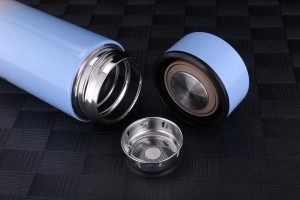1. Engraving/engraving etching process: This is a common method of making three-dimensional patterns. Manufacturers can use techniques such as laser engraving or mechanical etching to carve uneven patterns on the surface of the water cup. This process can make the pattern more detailed and complex, making the water glass more visually layered.
2. Printing process: By printing special patterns on the surface of the water cup, you can create a concave and convex three-dimensional effect. For example, special printing ink or textured ink is used to create a concave and convex feel to the pattern and increase the three-dimensional effect of the water cup.
3. Sandblasting process: Sandblasting is a common surface treatment process that can spray fine sand particles on the surface of the water cup to create a concave and convex feeling. This process can create varying degrees of roughness and smoothness, adding three-dimensionality to the water glass pattern.
4. Hot stamping/silvering process: By hot stamping or hot silvering on the surface of the water cup, the pattern can be made to appear concave and convex. The hot stamping and silver hot stamping materials visually contrast with the water cup material, making the pattern more prominent and three-dimensional.
5. Plastic injection molding process: For some plastic water cups, manufacturers can use plastic injection molding process to process concave and convex patterns on the surface of the water cup. This process can achieve some special shapes and three-dimensional effects.
6. Embossing process: By using embossing process on the surface of the water cup, the pattern is pressed on the surface of the water cup, thereby creating a three-dimensional and texture effect.
When designing and producing a concave and convex three-dimensional pattern on the surface of a water cup, manufacturers usually consider the characteristics of the material, the feasibility of the process, and the design complexity of the pattern. Different processes can achieve different effects, and manufacturers will choose the most appropriate production method based on market demand and consumer preferences. Through these processes, the appearance of the water cup will be more attractive and unique, bringing a more pleasant use experience to consumers.
Post time: Nov-17-2023
